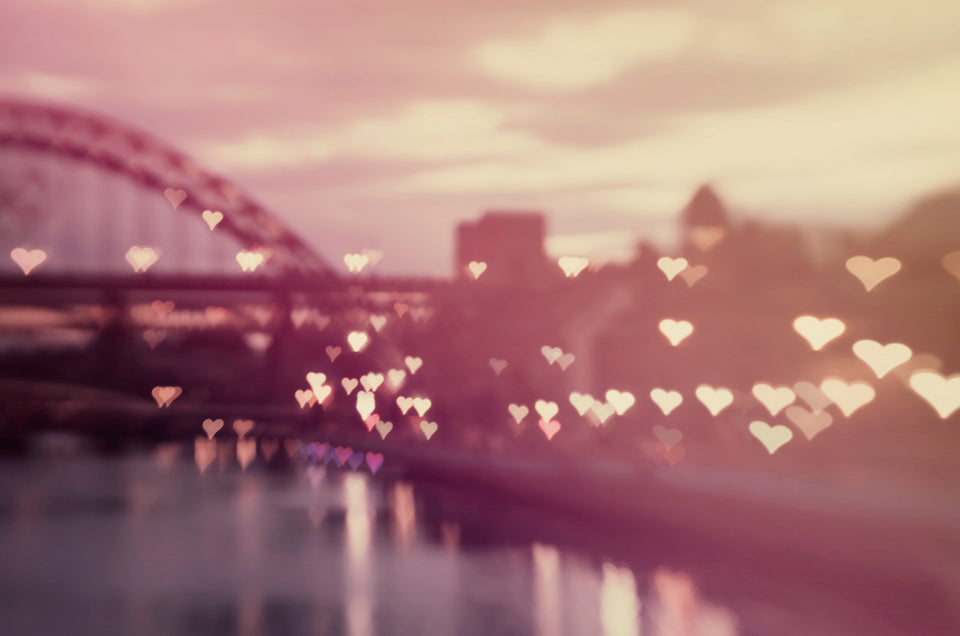
Heart Creative Aperture photo by bonniecraigphotography.com
We love creative apertures at Lensbaby and we?re releasing two more products that highlight how awesome they are: Special Edition Spark and Creative Aperture Optic.
Special Edition Spark is our bendy lens for Canon or Nikon that you focus with your fingertips, it has a specially installed optic that lets you swap out Creative Apertures.

Creative Aperture Optic is an interchangeable optic - so you need a swappable Lensbaby lens body like the Composer Pro in order to use it - that comes with a set of Creative Apertures.

Both let you take extra-dreamy, creative photos with different shapes in the out of focus areas of your image. Learn how get the most out of creative apertures - whether in a Special Edition Spark or Creative Aperture Optic - with the following tips and techniques.
Creative Apertures as Texture
Creative Apertures are perfect for adding texture to create images with a painterly feel. We suggest using slots, whirlpool, dripsplat, swirl or diamond to best achieve this effect. The texture can change based on the tilt of Spark or Composer Pro ? you can really exaggerate the effect depending upon the angle the light coming through the aperture.?The birds in this image soften up with the creative apertures adding a gentle texture that is different than a normal lens aperture blur.

Birds Creative Aperture photo by Stephane Gautier
A creative aperture can add an ethereal sense to elevate an ordinary image to something special.

Slots Creative Aperture photo by Abbie Kirkpatrick
Creative Apertures as Bokeh
Creative apertures can create incredible bokeh; in this photo the honey bee and part of his perch is in focus, while the rest of the frame is distorted by the diamond aperture bokeh. Getting this close to a subject and working in shallow depth of field can create bigger bokeh in the background more easily than standing farther back.

Diamond Creative Aperture photo by Abbie Kirkpatrick
In this shot, the creative aperture frames the subject allowing all of her to come through sharp with a textured background. Creative Aperture Optic and Special Edition Spark are both 50mm. Stepping back can make it easier to focus.

Swirly Creative Aperture photo by mmiddletonphotography.co.uk
Creative Apertures and light sources
Creative apertures work best when pointed at a light source that provides contrast against a dark background. Here are a few different light sources to consider when shooting your creative aperture images.
The Sun?
Often the most convenient light source, creative apertures like the star, sunburst, heart and birds work the best in sunny conditions with a strong semi-direct light.

Star Creative Aperture photo by Willie Kers
Single Source Light:
Creative Aperture images work incredibly well at night, or in darker spaces when used with a single source light (such as a sparkler, flashlight, neon sign, etc). Don't forget to adjust your shutter speed and ISO accordingly.?

Star Creative Aperture photo by Victoria Hederer Bell
Multi Source Light:
Use bright manmade lights during the day time to add an extra sense of motion that scatters away from the source of light.?

Swirly Creative Aperture photo by HIlary Freed
Creative Apertures with Macro
Using our Macro Converters with the Creative Aperture Optic and the Special Edition Spark can frame a small subject with intriguing creative aperture shapes.

Creative Aperture Macro photos by Debbie DiCarlo (left) and MJ Eslinger (right)

Diamond Creative Aperture photo by David Schlaich
In this defocused image below, heart shapes are picked up in the setting sun bouncing off the bridge and buildings, as well as street lights and car lights beginning to turn on. ?

Heart Creative Aperture photo by William Lumsden
Don't forget to bend your Lensbaby:
A crop sensor can crop out some of the key elements of the creative aperture details if you shoot straight forward. However, tilting and placing the sweet spot off-center helps more of the creative aperture effect come into full view. Tilting can also create additional distortion by pulling the shape of the aperture at an angle.

Tilt Comparison: Left - No tilt and focused on the center. Right - Tilted and focused at an angle.
Don't forget to take a step back:
I've found that I can be too close to the subject to see as much creative effect as I would like. Remember to take a step back from time to time to compose your shot, then focus. The minimum focusing distance for Creative Aperture Optic is 18 from the front of the lens, and 13" with Special Edition Spark if the lens is pressed away from the sensor. This is a good thing to keep in mind if you're trying to capture bees and butterflies without macro converters.

Below are examples of the different creative aperture shapes.?

you can also rotate your apps to change the direction in which the shapes go - this can be helpful with the slots, hearts and birds which look distinctly different when turned a different direction than upright.


Leave a comment
All comments are moderated before being published.
This site is protected by hCaptcha and the hCaptcha Privacy Policy and Terms of Service apply.